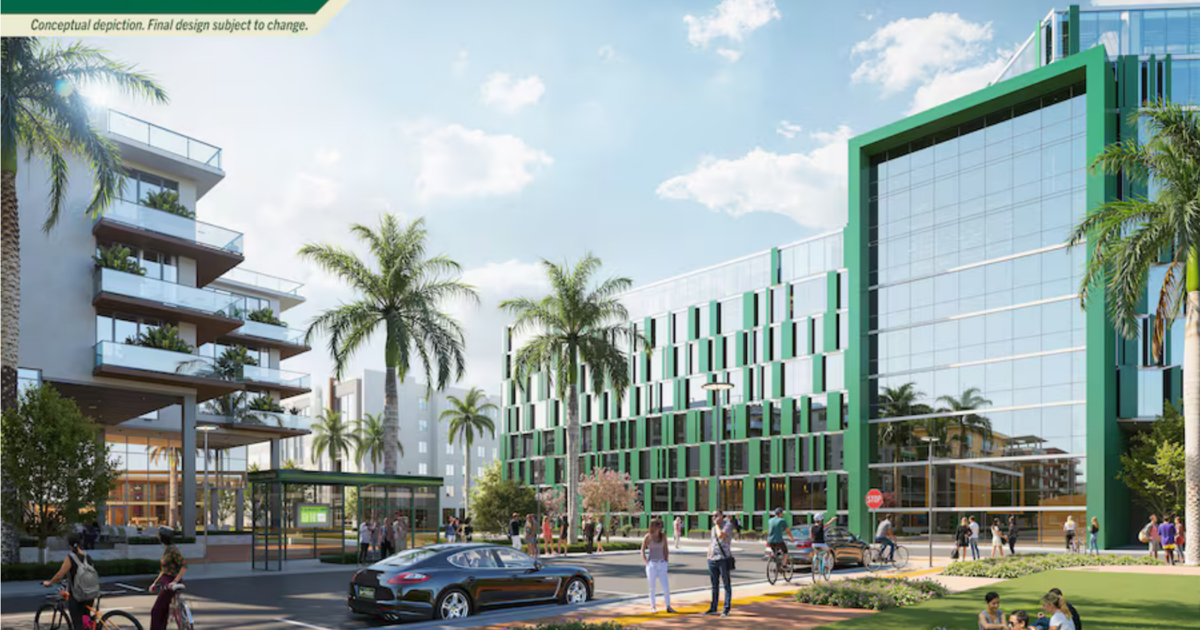The Florida Board of Governors, which oversees the state’s public universities, voted to approve the University of South Florida’s proposed mixed-use Fletcher District at a meeting in Tampa on Nov. 6.
Their vote approved the partnership between developers and the university, ensuring that state funds will pay for the project’s one academic building, and nothing else. The plan would convert the university’s old Claw golf course into housing, a hotel, conference center, retail, green spaces and the academic building.
It would all sit directly beside a 600-acre forest preserve, which has caused concern among students, environmentalists and nearby residents. The golf course land acts as a buffer from light pollution, noise, invasive species, domestic predators like cats and dogs and chemical runoff to the west, USF graduate and wildlife biologist Shiv Shukla said.
“Losing that golf course land, even if it’s not pristine habitat,” Shukla said, “it would directly expose the preserve to all those pressures.”
Even with the Board of Governors’ support of the project, construction can’t start without changes to the Tampa Campus Master Plan, which lays out land use, conservation and other infrastructure designations for USF’s Tampa campus.
About a dozen local and state agencies are undergoing a 90-day review period of an amendment to the master plan, university spokesperson Althea Johnson said. The amendment reflects zoning, traffic and environmental changes required by the Fletcher District project.
The agencies can provide feedback to the trustees, who have final approval of the master plan amendment, Johnson said. Right now, the land is zoned as recreational/open space, but trustees can change that if they approve the amendment at their meeting in December.
Hillsborough County Commissioner Ken Hagen said at the Nov. 6 meeting that the county has unconditional support for the project and for USF. The university is one of the county’s largest economic engines, he said.
“Hillsborough County is very proud to partner in this growth,” he said.
Members of the Board of Governors praised the project, too. Eric Silagy said it’s the perfect example of a public-private partnership. Ken Jones said the Fletcher District is an innovative plan and a testament to running universities like businesses.
“It’s pretty crystal clear,” board member Alan Levine said. “This is an absolutely great deal.”
Some environmentalists don’t feel the same.
The forest preserve is at the top of Hillsborough County’s wishlist of conservation land acquisitions. The university’s renewed attempt to develop land adjacent to property only reinforces its desire to purchase the preserve, said Jack Berlin, chairperson of the county’s land protection committee.
The parcel leapfrogged to top billing on the committee’s “essential sites” list for conservation shortly after the university first explored selling off the property to developers in 2021, Berlin said.
“We thought that USF was never going to touch it,” he said. That changed when university leaders “decided they would think about golf courses and hotel complexes and residential” development, Berlin said.
The committee has continued to eye the property even after the university withdrew its proposal in early 2022. At the time, the university declined to rule out future projects there.
“Some of this is abutting the Hillsborough River. Some of this is really sensitive land that abuts some of our preserves out there,” Berlin said. “I know it is a priority for us.”
Shukla estimates he has spent more than 400 hours tromping through the preserve’s knee-high grass and waist-high swamps while working on his doctorate degree. That’s not counting the hours he spent there picnicking with his partner or going for a stroll to clear his head.
Shukla’s thesis studied the rise of a fatal disease threatening Florida’s native snake species. The campus preserve, where he snatches snakes from under rocks and plywood traps before whisking them away to his lab, had made this research possible.
“It’s a beautiful piece of land, especially when you think about the sprawl and the urbanization around it,” said Shukla. “It’s sort of an oasis in the middle of Tampa.”
Shukla said the abandoned golf course land eyed for development has just started to recover. Native plants grow there. Birds, lizards and other wildlife use it as a corridor to the forest preserve, where they can pass freely, unimpeded by the hustle and bustle of humans.
USF plans to establish a buffer zone along the edge of the Forest Preserve in order to support wildlife.
The buffer will allow for a focus on restoring native vegetation and provide natural stormwater management, according to the amendment. The amendment also says the development will “encourage” pedestrian and bicycle usage to reduce vehicle traffic.
“In recognition of the preserve’s ecological significance,” the amendment says, “the University seeks to guide development in a way that complements its natural surroundings rather than disrupting them.”

